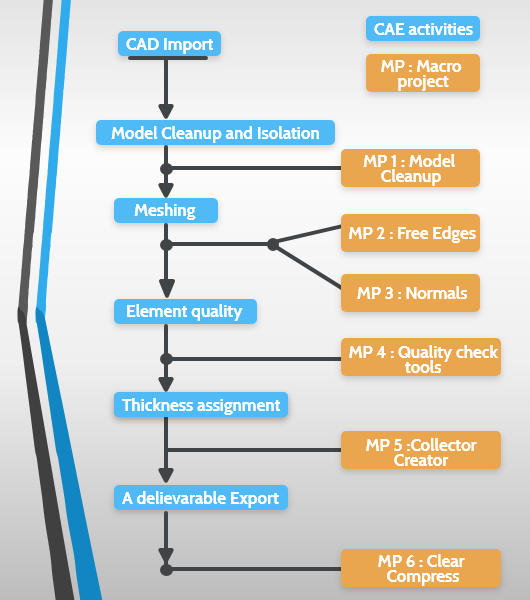Select a domain
I agree to Skill-Lync terms & conditions and privacy policy.
Job Trends In The CAE (Computer-Aided Engineering) Industry
Many new technologies have been integrated into the manufacturing process leading to fast and cost-efficient production of engineering products. The computer-aided engineering has enabled engineers to develop robust designs and arrive at the best possible solution without creating a physical prototype.
Job Trends In The CAE (Computer-Aided Engineering) Industry
_1680867408.png)
Many new technologies have been integrated into the manufacturing process leading to fast and cost-efficient production of engineering products. The computer-aided engineering has enabled engineers to develop robust designs and arrive at the best possible solution without creating a physical prototype. Using CAE techniques, one can simulate digital 3D CAD models and predicts their performance in the real world.
With the industry's growing need to engineer new products that are reliable, the CAE methodologies have evolved and paved the way to design sophisticated components. The modern CAE tools for designing, simulating, and analysing have revolutionised the design and manufacturing sector. Industries have adopted the principles of FEA and CFD to determine the efficiency of any system or component and make design modifications based on the results.
The CAE has penetrated into every engineering sector, including automotive, aerospace, biomedical, energy, and other industries. To scale up productivity, engineers apply different types of analysis and design methodologies to enhance the functionality of products as well as the manufacturing process. According to Grand View Research, the CAE market was expected to widen at a CAGR of 12.6% between 2023 to 2030. This has contributed to increasing the hiring of CAE engineers by up to 35% by 2025.
Types of Computer-Aided Engineering Courses
_1680867465.png)
New technologies and manufacturing equipment are being discovered every day. The industry's demand for a skilled workforce is also increasing. Prospective employers prefer candidates with advanced certification courses in CAE design who can become an asset to the organisation from day one of their work.
Below are the three popular types of courses for CAE training
CAE Analysis Training By Colleges/Universities
The most in-demand CAE training course in college educates students with fundamental concepts like what is CAE, CAE design and its applications. The NPTEL website also provides computer-aided engineering courses for free without certification, which is an initiative by prestigious universities IITs and IISc. Nonetheless, the certification can be obtained for INR 1,000/course with an examination.
CAE Online Courses By EdTech Companies
Ed-Tech companies like Skill-Lync offer expert-curated computer-aided engineering courses and equip you with the most in-demand skill sets. For those who are interested in stepping into the R&D sector of manufacturing industries, Skill-Lync’s Post Graduate Program in CAE can be an ideal option.
It is an NSDC-accredited CAE certification PG program through which aspirants can build expertise in CAE tools and become eligible for high-paying jobs at top MNCs.
CAE Training Through Internships
The job market for engineers is becoming highly competitive, and you have to master the essential skills that are in demand in the industries to bag a high-paying job. Hiring managers are looking for candidates who are strong in theoretical knowledge and have a practical understanding of technical concepts.
Engineers with certifications with advanced training programs and internships are highly valued as they possess experience in the professional environment. This is the trademark of Skill-Lync’s CAE certification program. Our mentor-led program, industry-relevant projects and internship opportunities make learners well-rounded professionals.
Specialisations in Computer-Aided Engineering Courses
_1680867542.png)
Skill-Lync’s CAE courses are designed to upskill engineers in the in-demand skills in the core industry. One of our popular advanced CAE certification courses is the Post Graduate Program in CAE, which covers these four concepts in their training modules:
- Crashworthiness Analysis using HyperMesh and Radioss
- HyperMesh for FEA Plastic and Sheet Metal Applications
- FEA using SOLIDWORKS
CAE Course on Crashworthiness Analysis
The crashworthiness certification course focuses on concepts of FEA, such as linear-nonlinear, static-dynamic, and implicit-explicit analysis, their differences, and the guidelines on choosing the right method. It will introduce you to 1D, 2D and 3D meshing techniques and provide you with the knowledge on how to check mesh quality. The crashworthiness training offered by Skill-Lync will allow you to to work on three industry-level projects through which you can gain hands-on experience in solving industry-level problems.
CAE Course Using HyperMesh
Skill-Lync’s HyperMesh training will enable you to create FEA meshes and perform geometry cleanups. Through the Finite Element Analysis course you will learn advanced 2D and 3D meshing concepts. It will also introduce you to the Morphing Techniques and Macro Generation.
FEA Using SOLIDWORKS
This short term FEAC course will introduce you to the SOLIDWORKS Simulation Environment. With Skill-Lync’s SOLIDWORKS online course you will learn to perform buckling analysis, fatigue analysis, drop test and frequency analysis. Toward the end of the projects-based SOLIDWORKS online certification you will work on a industry-level project.
Cost and Duration of CAE Certification Courses
The cost of CAE online training at Skill-Lync varies depending on the curriculum and program duration.
The fee structure of this CAE certification course has been divided into three categories: basic, pro, and premium.
Investing your time and money to acquire advanced skill sets can prepare you for a lucrative career. Through this Computer-Aided Engineering course, one can get ready for the following jobs:
Job Opportunities After CAE Certification Courses:
- CAE Engineer
- FEA Engineer
- FEA Analyst
- NVH Analyst
- Structural Meshing Engineer
- CAE Modeler
- Simulation Engineer
- Durability Engineer
- Crash Analyst/Engineer
Higher Education After CAE Training
In a rapidly growing tech landscape, continual learning and skill development are recommended. Those who are interested in higher education after CAE certification courses can easily consider the following post-graduate programmes:
- Master’s in Design Engineering
- Master’s in Mechatronics Engineering
- Master’s in Automotive Engineering
- Master’s in Automation and Control Engineering
Related Courses



